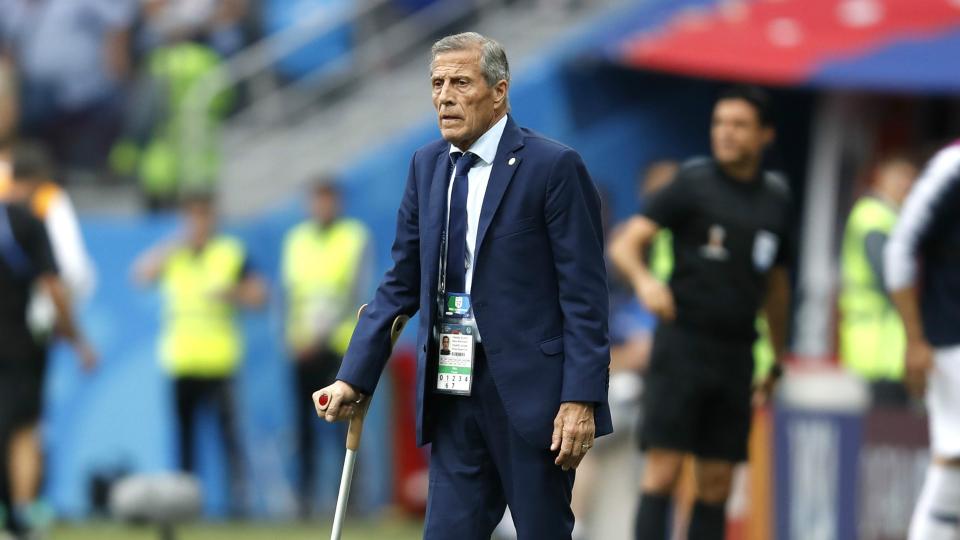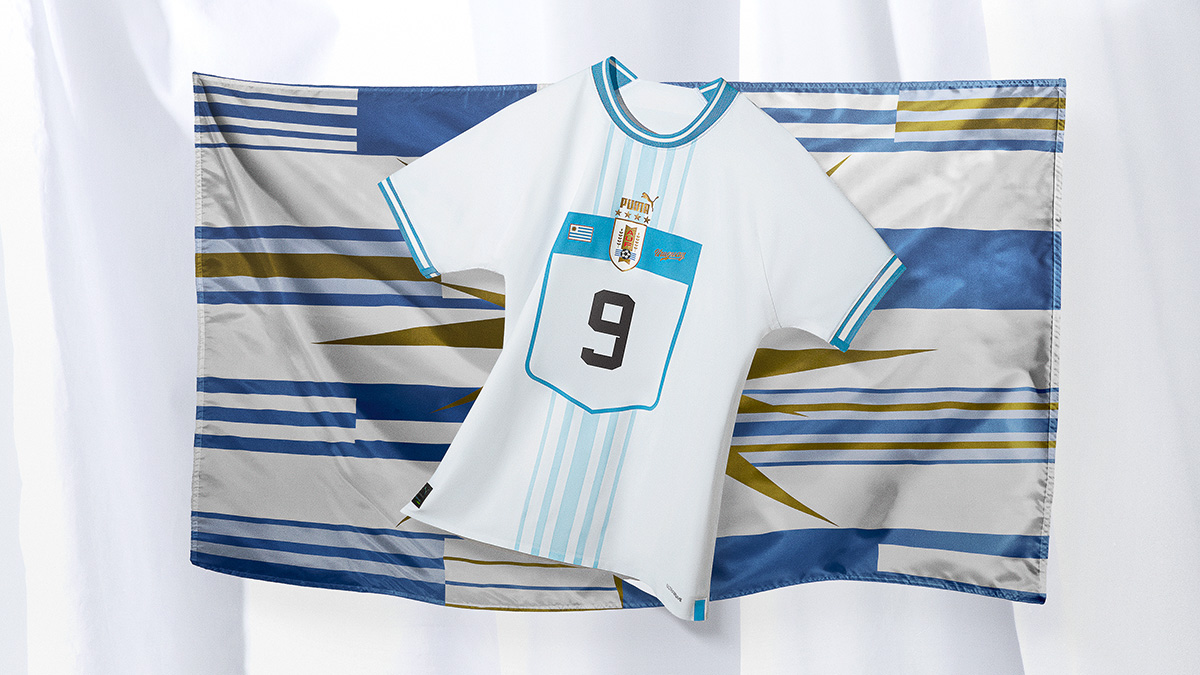Nike and the Uruguayan soccer federation signed a mega deal that allows the American sports apparel company to be the official kit supplier of La Celeste. But while a nation getting a new kit supplier is hardly a unique occurrence, this one had some abnormal twists and turns.
Things in Uruguayan soccer are done a bit differently. Despite the nation having some of the biggest stars in history and being a football-mad country, many aspects of Uruguayan soccer are amateur.
Ninety percent of the domestic league plays to attendances as low as 1,000. The country’s soccer scene is more or less split in two between the two biggest clubs, Nacional and Peñarol. The vast amount of attention (and in turn, money) is spent on these two teams, while the rest of the first, second, and third divisions fight over the scraps left behind.
Moreover, Uruguayan soccer is heavily centralized. Many teams hail from Montevideo, Uruguay’s capital, while in other areas like Artigas, Salto, or Colonia, the fan base is still split between the two giants, with some supporters for local clubs sprinkled in the mix.
It has not helped that Uruguayan soccer has refused to be inclusive to teams outside of Montevideo, maintaining the duopoly status quo for decades.
Stuck in the middle of it all is the national team, which is at times is one of the best in world football — like it currently is — and at others is a free-for-all of undisciplined players, agent contamination, and directors whose interests are not focused on the betterment of the program, but rather on lining their own pockets.
After being the best national team in the world from the 1910s to the 1950s, the decline of Uruguayan soccer began when La Celeste missed the 1978 and 1982 World Cups. This decline was mixed with woeful performances from a squad that boasted some of the most talented players in South America in the late 1980s. Two round of 16 appearances in 1986 and 1990 were followed by catastrophic no-shows in the 1994 and 1998 World Cups, a dismal performance in the 2002 World Cup, and once again missing out on the 2006 tournament.

Then Óscar Washington Tabárez became the coach in 2006, and El Proceso began. Tabárez essentially saved Uruguayan soccer by emphasizing a strong youth development program, fostering a cohesive and resilient squad that blended experience with emerging talent.
Under his leadership, Uruguay secured their 15th Copa América title in 2011 and reached the semifinals of the 2010 FIFA World Cup, showcasing a solid defensive structure and a potent counter-attacking style. Tabárez’s influence extended beyond tactics; he instilled a sense of national pride and unity, leaving a lasting legacy on Uruguayan football.
Uruguay has qualified for every World Cup since 2010, and achieved a fourth place finish in addition to appearances in the round of 16 and quarterfinals under “El Maestro.”
How AUF “Lost” the Right to Dress Their Own National Team

In the 1980s, as Uruguayan soccer began hitting rock bottom, the value of players and the league was at an all-time low. Mega agent Francisco “Paco” Casal emerged on the scene and would eventually become the agent for virtually every Uruguayan soccer player of that era, most notably Carlos Aguilera, Rubén Sosa, Enzo Francescoli, Hugo De León, and Nelson Gutiérrez.
Not only that, but unofficially, Casal, according to sources, financed certain clubs that faced financial difficulties in exchange for significant percentages of various players on those squads. By the late 1990s, Casal’s influence over Uruguayan soccer was immense, with clubs owing him thousands of dollars and percentages of many, if not most, Uruguayan soccer players. In addition, he founded Tenfield, a multimedia network that holds the rights to Uruguayan soccer.
Aside from gaining the rights to broadcast Uruguayan soccer at all levels in 1998, Tenfield also acquired the rights to the kit of the national team, meaning AUF sold a percentage of its kit deal to Tenfield for an established fee. This arrangement allowed Tenfield to negotiate with brands and see huge profits.
While reporting on how much AUF received is sketchy, the reality was that Tenfield had a significant say in which brand outfitted the national team and how much was earned from it.
In 2016, with the help of Tabárez, Diego Godín became the face of a movement aimed at breaking Tenfield’s stranglehold on the AUF. Despite those efforts, Tenfield and PUMA retained the rights to dress the national team until December 2023.
A New Nike Kit That Never Went on Sale
👕 𝗦𝗜𝗚𝗔𝗡 𝗩𝗜𝗘𝗡𝗗𝗢
Acá está 𝑙𝑎 𝑛𝑢𝑒𝑣𝑎 colección, la de la Copa. #ElEquipoQueNosUne pic.twitter.com/hML558N26p
— Selección Uruguaya (@Uruguay) June 16, 2024
When Tenfield’s contract with AUF expired, the federation saw this as a chance to reclaim what was once theirs: the kit of the Uruguayan national team. Through a loophole, AUF could not accept a new kit supplier until Tenfield had a six-month period to better any supplier’s contract.
During various FIFA windows, AUF provided the kits that Uruguay wore, and near the lead-up to the 2024 Copa América, it was announced that Nike would outfit Uruguay for the tournament.
There was one catch: Because of the six-month negotiation period, Nike was only supplying the kits for the Copa America, and they would not be sold to the general public. The AUF had to pay Nike to supply a sufficient number of kits for the tournament, and until the federation reached a final deal with Nike or any other supplier, fans would not be able to get their hands on the latest Uruguay jersey.
It was free branding for Nike as Uruguay played stylish, high-tempo soccer under Marcelo Bielsa, with stars like Luis Suárez, Darwin Núñez, Federico Valverde, and Rodrigo Bentancur on display, defeating the likes of the United States, Brazil, and Canada for a third-place finish.
After the tournament ended, AUF continued to call upon Nike to dress the team while Nike, adidas, PUMA, Kelme, and others placed bids to outfit the two-time FIFA World Cup winners.
And Finally, a Deal is Struck
View this post on Instagram
As of September 29, Nike and AUF, without the presence of Tenfield, signed a reported a four year, $40 million deal with the option to extend to eight if approved by the AUF Executive Committee and Congress.
If the AUF picks up the option, Nike will be with the nation until after the 2032 Copa America.
Uruguayan sports journalist Rodrigo Romano tweeted that the Nike and AUF deal will represent a 15% increase in cash flow compared to the recently concluded agreement.
“This agreement includes cash payments, complete kits for both the men’s and women’s teams, promotion and marketing of the Uruguayan national team brand worldwide, and other resources that will significantly contribute to the sporting structure of the Uruguayan Football Association,” Romano said.
Uruguay and AUF have finally closed a chapter on what was once bizarrely considered the status quo. And finally, those lovely Uruguay Nike kits can be sold to the public at large.








